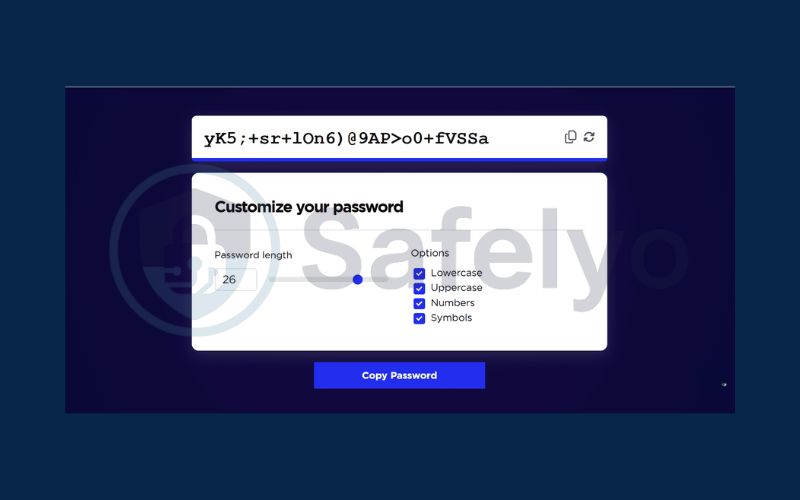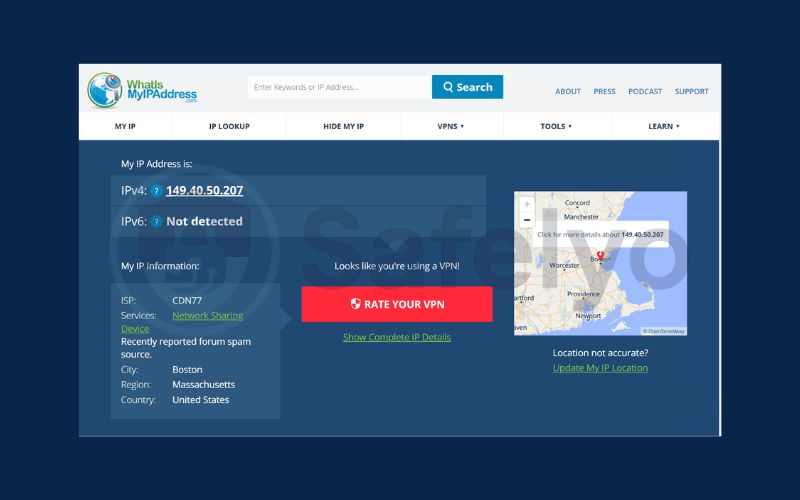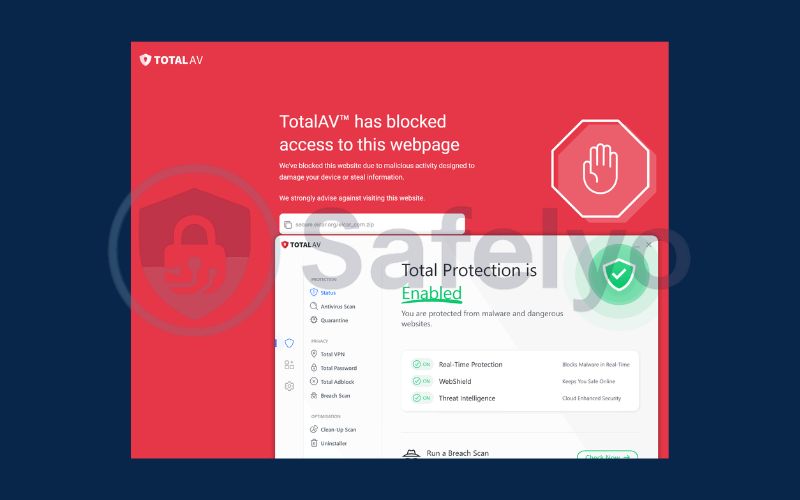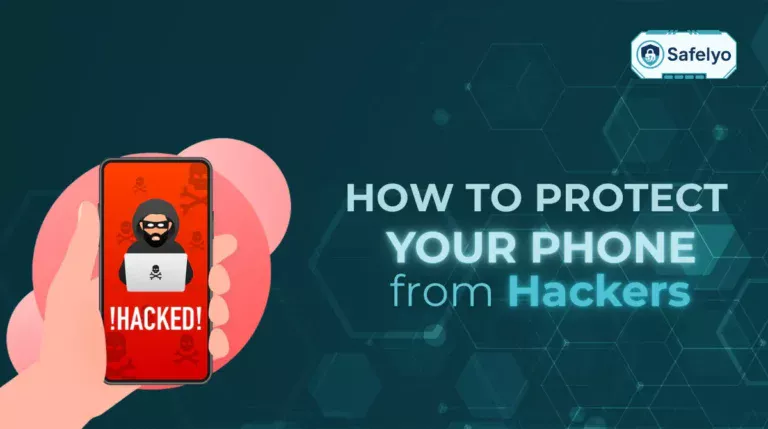Swatting is more than just a prank, it’s a life-threatening act where someone makes a false emergency report, causing armed police to be dispatched to an unsuspecting victim’s home. As this dangerous trend continues to rise, especially among gamers and streamers, knowing how to prevent swatting is essential for protecting your safety and privacy.
Key takeaways from this guide:
- What swatting is and why it’s dangerous
- Practical ways to reduce your risks and protect your digital presence
- What to do if you ever become a target
- Legal steps and advocacy actions to fight back against swatting
By following the strategies below, you can take control of your digital security and lower your risk of being swatted.
1. What is swatting?
Swatting is the act of making a false emergency report to trick law enforcement into dispatching a heavily armed response unit, often a SWAT team, to a victim’s home. The perpetrator may claim there’s a hostage situation, bomb threat, or active shooter in progress. These fabricated reports are designed to create chaos, frighten the victim, and waste police resources.
- Definition and how it works: Swatters usually gather personal details about their target first. This can happen through doxxing (publishing private information online), phishing, or buying data from broker sites. Once they know the victim’s address, they place a false call to 911 or a local emergency line.
- Common targets: Gamers and livestreamers are particularly vulnerable because they broadcast in real-time, sometimes accidentally revealing clues about their location. However, journalists, politicians, celebrities, and even everyday people can also be targeted.
- Why swatting is so dangerous: A swatting incident creates a high-risk environment where police expect violence. Victims may be confronted at gunpoint, handcuffed, or even injured if there is confusion. It also diverts law enforcement from genuine emergencies.
2. Why is swatting dangerous?
The dangers of swatting extend far beyond a “harmless prank.” It poses risks to victims, first responders, and entire communities.
- Legal consequences for perpetrators: In many countries, swatting is treated as a federal crime or a felony. Offenders may face years in prison, six-figure fines, or both. In the United States, the Department of Justice has prosecuted multiple swatters under anti-terrorism and cybercrime laws.
- Emotional and physical risks for victims: Being confronted by armed police without warning is traumatic. Victims often experience anxiety, sleeplessness, and a long-lasting fear of being targeted again. Physical injuries have occurred when police, believing a life-threatening situation was unfolding, used force to secure a scene.
Real-world cases and outcomes:
- In 2017, a swatting incident in Kansas led to the death of an innocent man after police were misled by a fake report.
- In Michigan, a false active shooter call forced police to shut down an entire neighborhood, wasting hours of resources and terrifying residents.
These cases highlight why swatting is considered both a crime and a public safety hazard.
3. How to prevent swatting
Preventing swatting is essential for anyone active online, especially gamers, streamers, and content creators, because attackers often exploit personal information to target victims. By taking proactive steps, you can protect your digital presence and secure your accounts. These actions also help reduce the risk of being swatted, from controlling what you share online to using tools like VPNs and antivirus software.
3.1. Limit what you share on social media
The less personal information you share publicly, the harder it is for someone to target you with swatting. Avoid posting your home address, phone number, or neighborhood photos, and turn off check-in features that could reveal your location. Whenever possible, set your accounts to private and only accept friend requests from people you know. Making social media accounts private and carefully curating what you post adds a crucial layer of protection.
Even small details can be exploited, swatters often use casual posts, photos, or status updates to piece together your location. In serious incidents, entire neighborhoods have been evacuated after a false report, showing that swatting can waste law enforcement resources and create real danger.

3.2. Remove your details from data broker sites
Data broker sites collect and sell personal information, including names, addresses, phone numbers, and even family connections. Attackers can purchase or search this information to locate victims. While you can manually request removal, this process is time-consuming. Using automated data removal services can delete your details from hundreds of databases quickly, making it much harder for swatters to find you.
Services like Incogni can remove personal records, including names, addresses, and contact details, from more than 250 data broker sites. This significantly reduces the chances that attackers can use your data to plan a swatting attack.

3.3. Create strong and unique passwords
Weak or reused passwords are an easy way for attackers to compromise accounts and gain personal information, including your address. Using a password generator to create complex, unique logins makes unauthorized access far more difficult. Pair this with a password manager, which stores credentials securely in an encrypted vault and auto-fills logins, so you never have to remember weak passwords manually.
Even one compromised account can expose other accounts if passwords are reused. Using strong, unique passwords is a foundational step in reducing swatting risk and improving overall online security.

3.4. Protect accounts with two-factor authentication
Two-factor authentication (2FA) adds an extra layer of security, ensuring that even if someone has your password, they cannot access your accounts without a one-time code. Codes can be received via an authenticator app or text message, but apps like Google Authenticator are generally safer.
Enabling 2FA on email, banking, and social media accounts prevents attackers from exploiting stolen credentials and provides peace of mind that your accounts are harder to breach.

3.5. Hide your IP address with a VPN
Your IP address can reveal your approximate location and internet service provider. Attackers can use this information to narrow down where you live. A Virtual Private Network (VPN) hides your real IP and replaces it with one from a secure server. This masks your location and makes it much more difficult for swatters to track your online activity.
Even persistent attackers will struggle to trace your location if your IP is protected, which makes a VPN one of the most effective preventive tools against swatting.

3.6. Use antivirus software for extra security
Malicious actors may attempt to trick you into clicking links or downloading files that expose personal information. Antivirus programs detect and block malware, spyware, and other threats in real time, quarantining suspicious activity before it can cause harm.
Keeping all devices protected with reputable antivirus software prevents attackers from gaining access to information they could use to locate you and plan a swatting attack. Regular updates and real-time scanning are key to maintaining strong protection.

4. What to do if you’re targeted
Even if you take every precaution, swatting can still happen. Knowing how to respond calmly can reduce risks to your safety.
- Stay calm and follow police instructions: If officers arrive at your home, remember that they believe a dangerous situation is unfolding. Keep your hands visible, avoid sudden movements, and comply with commands.
- Cooperate during the incident: Clearly state that you are the victim of a swatting attack once it is safe to do so. Don’t argue or attempt to explain too much at the moment, the priority is de-escalation.
- Contact authorities afterward to document the event: Once the incident is resolved, file an official police report and request that your address be flagged for potential swatting in the future. This ensures that if another false call comes in, officers will have context and can respond more cautiously.
Read more:
5. Legal and advocacy actions
Taking action after a swatting attempt not only protects you but also helps raise awareness of the issue.
- Report swatting attempts to law enforcement: Always notify the authorities, even if the attempt doesn’t escalate. Detailed records help police track offenders and build stronger cases.
- Understand the penalties swatters face: Knowing the severity of punishment (such as prison time and federal charges) can help you explain the seriousness of the crime to others. It also underlines that swatting is not a prank, it’s a felony.
- Support stronger anti-swatting legislation: Some regions now allow individuals to register their addresses with police departments, flagging them as potential swatting targets. Advocacy for broader adoption of these measures can make communities safer. You can also support digital privacy campaigns that push for stricter penalties against doxxing and swatting.
6. FAQs
Swatting raises many questions, especially for those who are new to online safety or streaming. Below are answers to some of the most common concerns about this dangerous practice.
Is swatting illegal?
Yes. Swatting is a criminal act and is taken very seriously by law enforcement. In many countries, it can lead to felony charges, long-term imprisonment, and substantial fines. In severe cases where someone is harmed or killed during a swatting incident, perpetrators may even face manslaughter charges.
Can anyone be a victim of swatting?
Yes. While gamers and streamers are common targets because they spend time online and often share personal details, ordinary people can also be victims if their personal information is exposed. Even a small piece of data, like a phone number or IP address, can be enough for attackers to track down someone’s location.
What’s the best way to protect against swatting?
The most effective defense is to protect your personal information online. Start by reducing what you share on social media, removing your details from data broker sites, and securing all of your accounts with strong passwords and two-factor authentication. Using a VPN to hide your IP address is also crucial, as it makes it much harder for swatters to trace your location.
Should I tell local police about swatting risks?
Yes. Many police departments allow residents to flag their address if they believe they are at risk of being swatted. By doing this, law enforcement is informed in advance and can respond more cautiously if a suspicious emergency call is made about you. This extra step could prevent a tense situation from escalating.
What role does a VPN play in preventing swatting?
A VPN (Virtual Private Network) hides your real IP address and replaces it with one from a secure server. Since an IP address can reveal your approximate location and ISP, masking it makes it much harder for attackers to track where you live. A VPN also encrypts your traffic, adding another layer of online privacy and protection against swatting and doxxing attempts.
7. Conclusion
How to prevent swatting is essential because it is not just a prank, it is a dangerous crime that can cause trauma, injury, or even loss of life. While you cannot control the actions of malicious individuals, you can take proactive steps to reduce your exposure and make yourself a harder target.
Here are the key takeaways to keep in mind:
- Limit personal information on social media because even small posts or photos can give attackers clues about your location.
- Remove your data from broker sites since opting out makes it harder for malicious actors to find and target you.
- Use strong passwords and enable 2FA so that your accounts are much harder to compromise.
- Hide your IP with a VPN because it masks your real IP and protects your location.
- Protect your devices with antivirus software since it blocks malware and spyware that could expose sensitive information.
Staying safe online requires consistency and awareness. Every step you take adds an extra barrier between you and malicious actors, significantly lowering your risk of being targeted. For more practical digital safety guides, visit the Tech How-To Simplified category on Safelyo and keep strengthening your online defenses.






